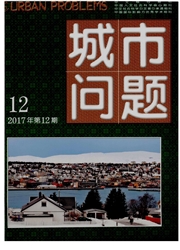

 中文摘要:
中文摘要:
以江西省为研究区域,从人口、经济、土地、生活方式等4个方面构建综合城市化水平指标体系,利用主成分分析确定各指标权重,最终得出江西省91个县市的综合城市化水平,对综合城市化水平进行空间自相关及其增长率分析,结果发现:(1)2000—2005年江西省人口、经济、生活方式城市化出现明显增加,而土地城市化出现负向增长;2006—2010年江西省人口、经济、生活方式城市化出现收敛趋势,土地城市化的负向增长形势有所改善;(2)江西省综合城市化水平地区间的空间关联性不明显,高水平地区并未发挥正向溢出作用;(3)2000—2005年,江西省综合城市化水平并未出现明显增长;2006—2010年,全省综合城市化水平出现大面积增加。建议城市化水平较高的地区能够加大对周围地区的正向溢出,增加辐射范围,而其他地区应当以各自地级市为中心,积极响应政策措施,结合自身特点努力提高城市化水平。
 英文摘要:
英文摘要:
Taking Jiangxi Province as the research area, this paper built an index system to calculate the four urbanization indexes, namely, population, economy, land use and life style.With principal component a- nalysis, we finally got the the weights of every index and the integration level. Next, we examined the spatial relationship of integration and the change of growth rate. The results showed that in the period from 2000 to 2005, population, economy and life style showed a significant increase while land use experienced a negative increase. From 2006 to 2010, significant convergent tendency was found of urbanization indicated by popula-integration did not experience a significant increase,while from 2006 to 2010 it showed a widespread develop- ment.The results give two policy implications. One is that the region with high urbanization should strengthen the positive spillover to neighboring regions and add the number of areas being infulenced.The other is that city regions should take their administration city as the centre, and positively fit the policy to improve their urbani- zation on the basis of their unique features.
 同期刊论文项目
同期刊论文项目
 同项目期刊论文
同项目期刊论文
 期刊信息
期刊信息
